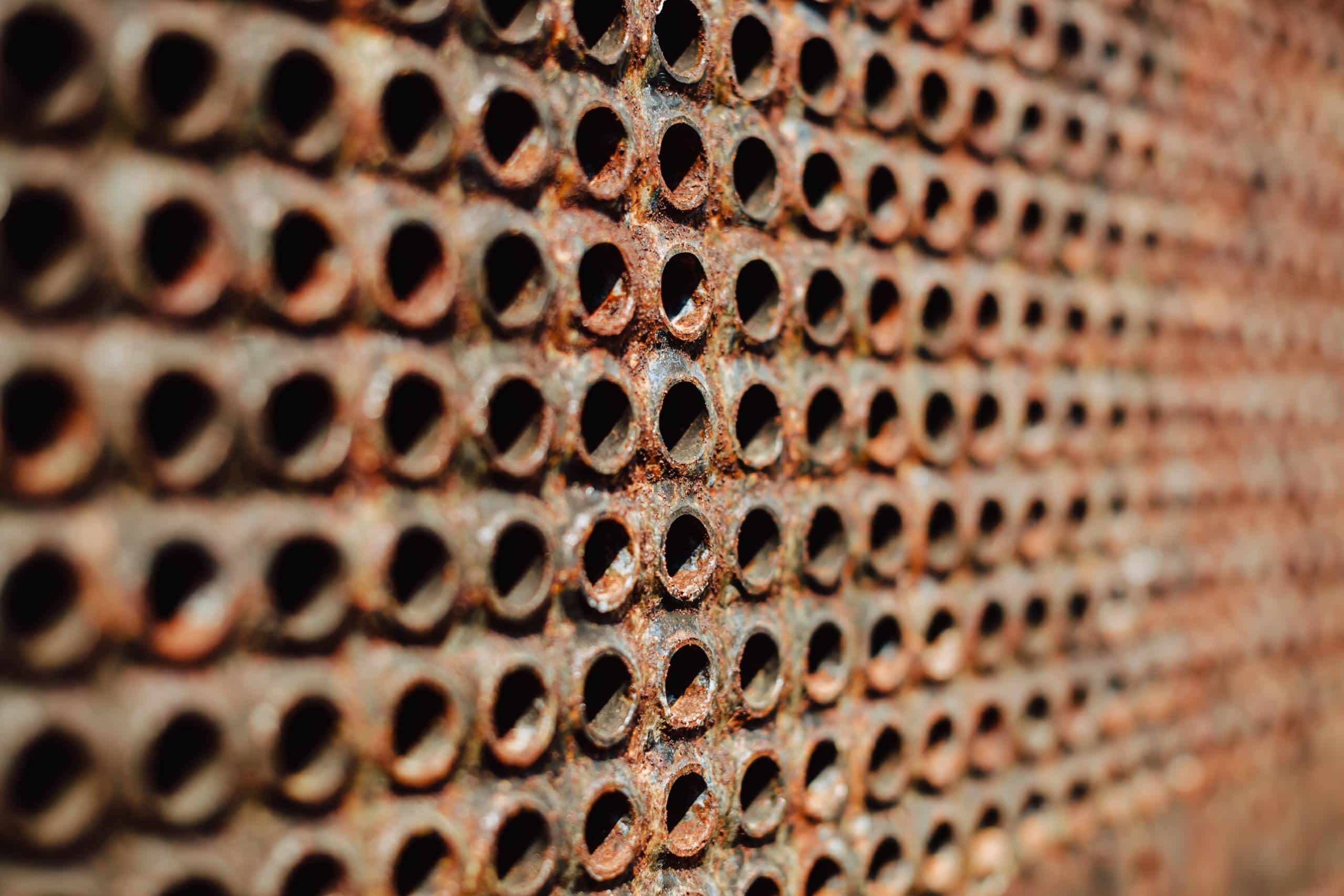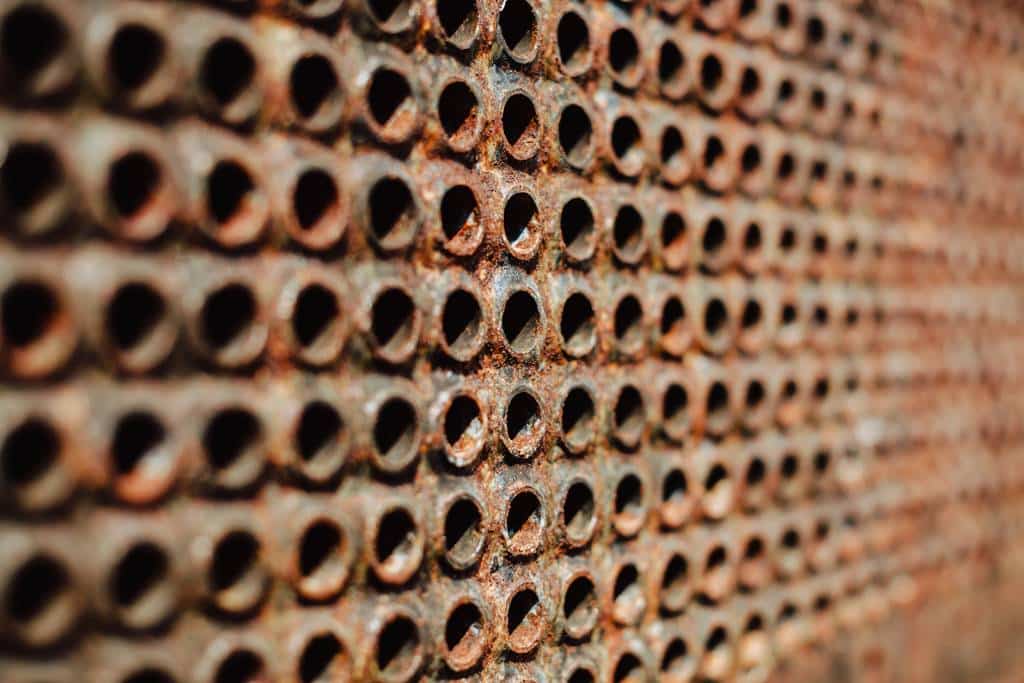Heat exchangers are vital components in commercial and industrial HVAC systems, facilitating the transfer of heat from one medium to another. However, these components are not immune to wear and tear, and with time, heat exchangers can develop cracks, which can lead to a host of problems. In this blog post, we will explore the causes of heat exchanger cracks, the associated risks, and the importance of regular inspections and maintenance. We will also discuss the production and dangers of carbon monoxide (CO) exposure caused by cracked heat exchangers.
Causes of Heat Exchanger Cracks
- Corrosion: One of the primary culprits behind heat exchanger cracks is corrosion. The constant exposure to moisture and combustion gases can lead to the gradual deterioration of the exchanger’s metal surfaces.
- Stress: Excessive strain, often caused by temperature fluctuations or improper installation, can lead to fatigue in the heat exchanger material, resulting in cracks over time.
- Wear and tear: The wear and tear that occurs during normal operation can weaken the heat exchanger, making it more susceptible to developing cracks.
The Risks Associated with Cracked Heat Exchangers
- Carbon monoxide (CO) leakage: Perhaps the most significant risk is the potential for CO leakage. A cracked heat exchanger can allow carbon monoxide, a deadly gas, to escape into a building, posing a severe health hazard for occupants.
- Reduced efficiency: Cracks in heat exchangers can also lead to reduced HVAC system efficiency, resulting in higher energy bills and inadequate heating.
- Fire hazard: In extreme cases, a cracked heat exchanger can result in a fire due to the escape of flammable gases, endangering lives and property.
The Significance of Regular Inspections and Maintenance
- Safety: Inspections can detect cracks early, preventing CO leaks and other potential hazards.
- Efficiency: Well-maintained heat exchangers operate more efficiently, saving energy and money.
- Longevity: Proper care can extend the lifespan of heat exchangers, delaying the need for costly replacements.
For diligent business owners, enrolling in a proactive HVAC maintenance program is an invaluable investment in safeguarding your business. It ensures that no issues go unnoticed, resulting in fewer repairs, consistent comfort, and creating a conducive environment for happier, healthier, and more productive workers.
Carbon Monoxide (CO) in Commercial and Industrial HVAC Systems
In commercial and industrial HVAC systems, CO can be produced when a heat exchanger is cracked, allowing combustion gases to mix with indoor air. CO is known as the “silent killer” for a reason. It is colorless and odorless, making it a pertinent threat, and exposure to even low levels of CO can have severe health consequences, ranging from headaches and dizziness to nausea, fatigue, and confusion. In more severe cases, CO poisoning can lead to unconsciousness and death.
TRI-AIR Systems: Your Trusted Choice for HVAC Companies Toronto and Timely Heat Exchanger Solutions
When it comes to the safety and comfort of your business premises, there’s no room for compromise. If you suspect or discover a cracked heat exchanger in the HVAC system, swift action is imperative. Look no further than TRI-AIR Systems, your reliable ally in resolving heat exchanger issues and a leading name among HVAC companies in Toronto.
Contact us today for the quick detection and resolution of your HVAC concerns, including cracked heat exchangers. Your safety and peace of mind are our top priorities.
- What causes heat exchanger cracks in HVAC systems?
- Heat exchanger cracks can result from factors such as corrosion, stress, and wear and tear during normal operation. Learn more about these causes in our detailed article.
- Why are heat exchanger cracks a serious concern?
- Cracked heat exchangers pose significant risks, including carbon monoxide leakage, reduced system efficiency, and even the potential for fire hazards. Understanding these risks is crucial for maintaining a safe HVAC system.
- How can I detect heat exchanger cracks in my HVAC system?
- Regular inspections by qualified professionals are essential for the early detection of heat exchanger cracks. Look out for signs such as increased energy bills, inadequate heating, or unusual noises from your HVAC system.
- What are the dangers of carbon monoxide (CO) exposure from a cracked heat exchanger?
- CO exposure can lead to severe health consequences, ranging from headaches and dizziness to nausea, fatigue, and confusion. In extreme cases, it can result in unconsciousness and death. Learn how to protect against this “silent killer.”
- How can routine HVAC maintenance prevent heat exchanger issues?
- Regular maintenance is key to detecting cracks early, ensuring system efficiency, and extending the lifespan of heat exchangers. Discover the benefits of enrolling in a proactive HVAC maintenance program.






